By: Ashley Tilahun, Au.D., CCC-A, FAAA
Table of content
- Abstract
- Introduction
- Types of Sounds that LFSNHL Can Affect:
- Prevalence and Incidence of LFSNHL
- Ms. Jarvis’ Case History
Abstract
This case study focuses on Ms. Jarvis*, an 81-year-old woman with bilateral low-frequency sensorineural hearing loss, with her right ear worse than her left. She initially struggled to understand speech in everyday situations, such as watching TV or in semi-noisy environments. After being fitted with Phonak Audéo Paradise 90 R rechargeable hearing aids in 2021 and with consistent fine-tuning of her hearing aids and regular consultations, her ability to understand speech in her everyday listening conditions improved. Tailoring communication strategies and adjustments to meet her specific needs helped Ms. Jarvis fully benefit from her hearing aids. This case study illustrates the causes of low-frequency hearing loss while emphasizing effective management methods using modern hearing aid technology.
Introduction
Definition of Low-Frequency Sensorineural Hearing Loss:
Low-frequency sensorineural hearing loss (LFSNHL) is a rare type of hearing loss in which people struggle to hear sounds in the lower frequency range, typically between 250 and 1,000 Hertz (Hz). This type of hearing loss usually presents better hearing sensitivity in the higher frequencies. This type of hearing loss can be progressive, and symptoms may include tinnitus, such as a ringing or buzzing sound. This condition happens when there is damage to the inner ear or the auditory nerve, making it harder to hear low-pitched sounds (Gan & Oldak, 2023).
LFSNHL can be caused by factors like aging, Ménière’s disease, or other genetic conditions (Merchant et al., 2005; Wilson et al., 2017). LFSNHL can make it difficult to understand speech, especially in quiet or noisy environments since low-frequency sounds play a key role in speech understanding.
Types of Sounds that LFSNHL Can Affect:
-
Vowel sounds in speech: Vowel sounds, which are lower in pitch than consonants, are essential for understanding speech. Words like "cat," "book," and "father" may sound unclear or muffled.
-
Male voices: Since male voices are typically lower in pitch than female voices, individuals with low-frequency hearing loss may struggle to hear men speak clearly, especially in noisy and quiet environments.
-
Background noises: Sounds like the rumble of thunder, car engines, or the hum of appliances (like a washing machine) are all low-pitched noises that could be harder to hear.
- Music: Instruments like bass guitars or lower-pitched notes on a piano may sound faint or indistinct, affecting the enjoyment of music.
These challenges can make conversations more difficult and reduce overall awareness of important sounds in the environment (Wilson et al., 2017; Merchant et al., 2005).
Prevalence and Incidence of LFSNHL
LFSNHL is relatively uncommon compared to high-frequency sensorineural hearing loss (HFSNHL), with an overall prevalence influenced by specific causes and age groups. In the United States, sensorineural hearing loss—of which low-frequency loss is a subset—affects approximately 48 million people, or about 15% of the population. The prevalence rises sharply among those aged 65 and older, impacting one in three individuals. Although global and U.S. statistics often overlap, regional data highlight how demographic factors, noise exposure and healthcare access contribute to variations in prevalence.
The incidence of LFSNHL is associated with several conditions, such as Ménière’s disease, genetic factors, and age-related degeneration, and varies depending on the etiology. Studies estimate that Ménière's disease affects about 0.2% of the population globally and is a leading cause of low-frequency loss. Aging is a significant factor, with progressive low-frequency loss contributing to the broader spectrum of presbycusis.
Ms. Jarvis’ Case History
Ms. Jarvis reported experiencing initial hearing concerns since she was in her mid-50s. She indicated that she first noticed hearing difficulties when she struggled to hear her late husband at home and former male co-workers. She indicated that eventually, later in her late 50s, she struggled to hear the TV and when using the telephone. Ms. Jarvis stated that she began noticing even more increased difficulty understanding low-pitched sounds and voices around the early to mid-70s.
Ms. Jarvis arrived at the clinic in the Spring of 2021. Her hearing test (Decibel Chart) was completed. Her hearing test results showed moderate LFSNHL to uprising normal hearing sensitivity to moderately-severe HFSNHL at 8000 Hz in the left ear; and a moderately severe LFSNHL to uprising mild to moderately-severe HFSNHL in the right ear. She attributes her hearing challenges to aging. She denied any family history of hearing loss or other health-related conditions that may have caused her to experience hearing loss. She indicated that she would occasionally experience dizziness and low-pitched humming-like tinnitus.

Ms. Jarvis’ 2021 Decibel Chart
After her hearing aid evaluation, careful consideration, and recommendations, it was suggested that Ms. Jarvis try Phonak Audeo Paradise (P)-90 Rechargeable (R) Receiver-In-The-Canal (RIC) hearing aids. Ms. Jarvis was in agreement with the recommendation. It was suggested that she contact her ENT or primary care physician for medical clearance for hearing aids due to low frequency and asymmetric configuration type hearing loss. After obtaining medical clearance, Ms. Jarvis was fitted with the devices at her hearing aid fitting appointment two weeks later. Her hearing aids were customized for her audiogram (Decibel Chart) to amplify and enhance the low frequencies while maintaining sound clarity in the higher frequencies.Ms. Jarvis’ Phonak Audeo P-90 R Hearing AidsFirst Hearing Aid Follow-up FrustrationsMs. Jarvis returned to the clinic for her first follow-up appointment after receiving her new Phonak hearing aids. During her visit, she shared her experiences with the devices. She expressed that she had noticed improvements in hearing and understanding speech in quiet situations and found that the hearing aids were comfortable to wear. However, she expressed frustration with difficulty understanding speech in noisy environments and struggled to hear the television. She expressed that she would like her hearing aids to be louder so that she can understand spoken communication better while watching TV.In response to these concerns, adjustments were made to her hearing aids, including strengthening the background noise reduction feature to minimize distractions in noisy settings. The overall volume was also increased to provide better fullness and clarity of sounds, particularly for speech. These changes were made to improve her ability to follow conversations in various situations and enhance her TV viewing experience. It was recommended that she return in 2 weeks to one month or sooner if she continued to have issues with her devices.Second Hearing Aid Follow-up Satisfaction and SuggestionsMs. Jarvis returned for her second follow-up appointment one month after her first hearing aid follow-up appointment. She reported noticeable improvements in speech clarity in quiet and semi-noisy situations, but she indicated she continued to struggle in very noisy environments. She mentioned that she could now hear the TV much better and no longer needed to increase the TV volume to understand speech. Overall, she expressed satisfaction with the performance of her hearing aids.During the appointment, it was explained to Ms. Jarvis that while hearing aids are effective, they are not perfect and cannot eliminate all background noise or ultimately enhance speech clarity in every situation. Instead, hearing aids enhance speech by softening background noise and focusing on amplifying speech. Ms. Jarvis was also counseled on self-advocacy strategies, such as preferential seating in quiet areas or away from noise, using her Phonak Hearing Aid app on her cellphone to adjust the volume and sound quality of her hearing aids, and utilizing lip-reading whenever possible. Additionally, she was advised to ensure she is in a well-lit environment to see the speaker’s face better, which could help improve communication in noisy or challenging settings. It was suggested that Ms. Jarvis return to the clinic every 3 to 6 months for a hearing aid check and one year or sooner for an updated hearing test. Continued Challenges and ProgressMs. Jarvis returned to the clinic in the Summer of 2021 for hearing aid adjustments and hearing aid computer updates. She reported some satisfaction with the sound quality of her hearing aids, specifically while watching TV and utilizing her house and cell phone. However, she indicated that she may have generally adapted to the volume of her hearing aids and would like to increase her hearing aid volume for better listening support. Her hearing aids’ computer updates were completed, and the overall volume of her devices was increased by about three steps from her default setting. Her hearing aids were also cleaned and checked, and they functioned correctly. Ms. Jarvis was satisfied with her new adjustments. In the Spring of 2022, Ms. Jarvis returned to the clinic for an updated hearing test due to possible decreased hearing sensitivity in her right ear. Ms. Jarvis’ 2022 Decibel ChartHer test result revealed a slight decrease in her hearing sensitivity. Her right ear revealed overall decreased hearing sensitivity. Her left revealed a slight decrease in the mid and high frequencies. Her hearing aids were re-programmed to her 2022 hearing test results. Ms. Jarvis reported satisfaction with the sound quality of her hearing aids.Ms. Jarvis returned to the clinic in the early Winter of 2023, expressing concerns about decreased hearing sensitivity in her right ear due to difficulty with speech clarity. Mrs. Jarvis’ 2023 Decibel ChartUpdated test results revealed slight threshold improvements at 250 and 1500 Hz in both ears when compared to her 2022 test results. As per Ms. Jarvis’ request, her hearing aids were slightly adjusted by increasing the overall volume one step from her default levels for better listening and speech comfort. Ms. Jarvis returned to the clinic in the Summer of 2023 for hearing aid repair, in which the left hearing aid would not connect to her phone via Bluetooth, so she could utilize the Phonak app for volume control and adjustments. Her hearing aids were sent out for repair, and loaners were provided. Ms. Jarvis returned two weeks later to pick up her repaired device, which was then programmed to her settings.Ms. Jarvis did not return to the clinic until Fall 2024, expressing possible decreased hearing sensitivity in her right ear. Her hearing test was updated.Mrs. Jarvis’ 2024 Decibel ChartMs. Jarvis’ hearing test (Decibel chart) revealed a slight decrease in the low and high frequencies, with a significant decrease at 1500 Hz for her right ear and a slight overall decrease for her left ear. However, even with a slight decrease in Ms. Jarvis’ hearing sensitivity, her hearing sensitivity would still be considered essentially stable when compared to her 2023 test results. As per Ms. Jarvis’ request, her hearing aids were adjusted to increase the low-frequency volume of the right hearing aid and increase the overall volume of one step for the left hearing aid so that she can experience fullness of sounds and better speech clarity. Ms. Jarvis reported satisfaction and will return to the clinic as needed. Positive Impact of Ongoing Hearing Aid CareMs. Jarvis's regular visits to the clinic every three to six months have been essential in her ongoing improvements in hearing and comfort. These visits allow for timely adjustments to her hearing aids, ensuring that they continue to meet her changing needs. Over time, Ms. Jarvis has reported improvements in her ability to enjoy watching television and having conversations on her cell and house phone. She has also experienced better understanding in quiet and group settings with some background noise but has continued to struggle with speech understanding in significant background noise. Despite her age, her hearing loss has remained stable, with little progression since her initial diagnosis. Consistent use of hearing devices and regular check-ups provide opportunities for patient education. This ensures that Ms. Jarvis was able to utilize given resources and tools, such as her hearing aid app, and implement effective communication strategies, such as self-advocacy in social situations. Doing so allows Ms. Jarvis to get the most out of her hearing aids and experience improved quality of life.ConclusionMs. Jarvis’s case highlights the positive impact of regular hearing aid follow-ups in managing low-frequency sensorineural hearing loss. She has experienced improved speech clarity and better TV comprehension with ongoing care. This case emphasizes how fine-tuning hearing aids and utilizing recommended self-advocacy strategies can enhance communication in daily life, leading to greater satisfaction with hearing aids (Wilson et al., 2017).Audiologist's TakeawayMs. Jarvis' case highlights the value of regular follow-ups in managing hearing loss. Her consistent progress demonstrates how fine-tuning hearing aids can address evolving needs, improving comfort and auditory clarity. The advanced features of her Phonak Audéo Paradise 90, such as background noise reduction and speech enhancement, helped her better hear in noisy environments and better TV enjoyment contributing to her satisfaction.However, given the nature of her low-frequency hearing loss, it is important to consider further testing to identify any underlying causes, such as Ménière’s disease, which could potentially impact her long-term auditory health. Regular check-ups with her ENT physician are recommended to monitor any changes and ensure early intervention if necessary. Additionally, annual audiometric testing will help track the stability of her hearing, allowing for timely adjustments to her hearing aids and proactive care. With continued monitoring and personalized care, Ms. Jarvis can maintain her hearing health and live her life abundantly.2025/01/05 UpdateIt is quite important to take a hearing test regularly to understand you actual hearing situation, take now at LINNER Online free hearing testand get result in 5 minutes.References: Merchant, S. N., Adams, J. C., & Nadol, J. B. Jr. (2005). Pathophysiology of Ménière’s syndrome: Are symptoms caused by endolymphatic hydrops? The Laryngoscope, 115(3), 529–534. https://doi.org/10.1097/01.mlg.0000157696.54509.b6 Wilson, B. S., Tucci, D. L., Merson, M. H., & O'Donoghue, G. M. (2017). Global hearing health care: New findings and perspectives. The Lancet, 390(10111), 2503–2515. https://doi.org/10.1016/S0140-6736(17)31073-5 Gan, N. S., Oziębło, D., Skarżyński, H., & Ołdak, M. (2023). Monogenic Causes of Low-Frequency Non-Syndromic Hearing Loss. Audiology & neuro-otology, 28(5), 327–337. https://doi.org/10.1159/000529464 Krist, A. H., Davidson, K. W., Mangione, C. M., Cabana, M., Caughey, A. B., Davis, E. M., Donahue, K. E., ... & US Preventive Services Task Force. (2021). Screening for hearing loss in older adults: US Preventive Services Task Force recommendation statement. JAMA, 325(12), 1196–1201. https://doi.org/10.1001/jama.2021.1712 Chien, W., & Lin, F. R. (2012). Prevalence of hearing aid use among older adults in the United States. Archives of Internal Medicine, 172(3), 292–293. https://doi.org/10.1001/archinternmed.2011.1312 Muñoz, K., Shinn, J. D., & Gaffney, M. (2020). A practical guide to adjusting hearing aids for background noise. Audiology Today, 32(4), 40-44. Valente, M., Preece, J., & Schum, D. (2006). The role of amplification in managing hearing loss in adults. The Hearing Journal, 59(10), 24–29. https://doi.org/10.1097/01.HJ.0000365173.76645.c3***Please Note: To safeguard the individual's privacy, the name has been changed in this article.***Disclaimer: The content presented here serves general informational purposes and is not intended as professional advice or a replacement for medical consultation. It is essential to seek personalized guidance and assistance from a qualified physician or hearing healthcare provider for any specific questions, concerns, or individual health conditions related to hearing. A professional in the field can offer a comprehensive evaluation and suitable recommendations based on your unique circumstances. Ignoring or postponing seeking medical or professional help may have negative impacts on your health. Always consult with a healthcare professional for precise diagnosis, appropriate treatment, and personalized advice concerning your hearing health.***


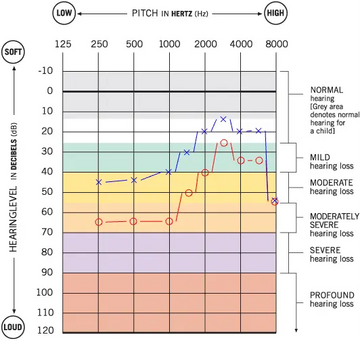
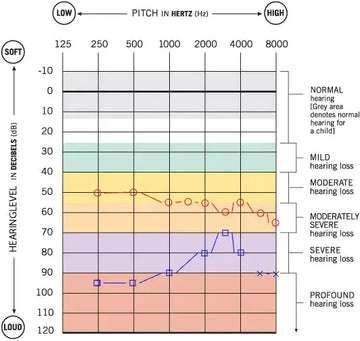
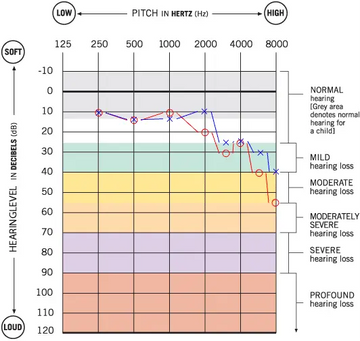
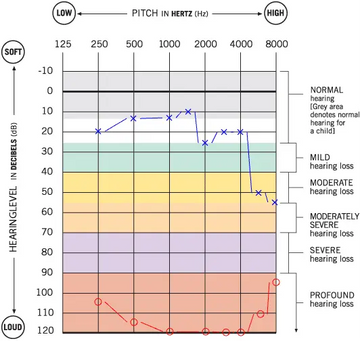
![Linner Mercury Clarity OTC Hearing Aids [FSA & HSA Eligible] Linner](http://www.linnerlife.com/cdn/shop/files/Linner-Mercury-Clarity-OTC-Hearing-Aids-_FSA-_-HSA-Eligible_-Linner-110038953.webp?v=1725853434&width=360)
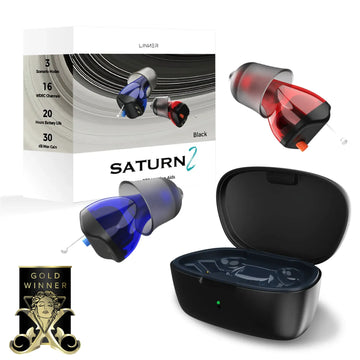

Very helpful!